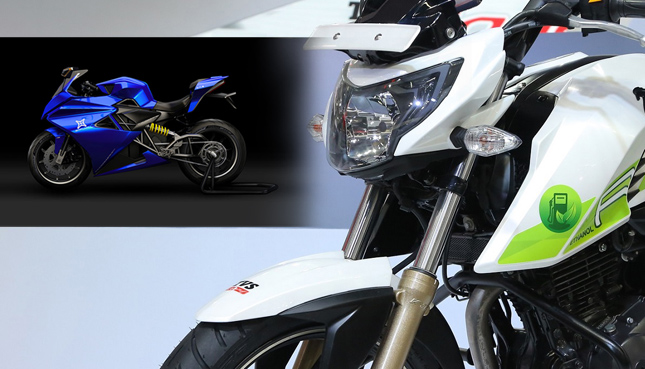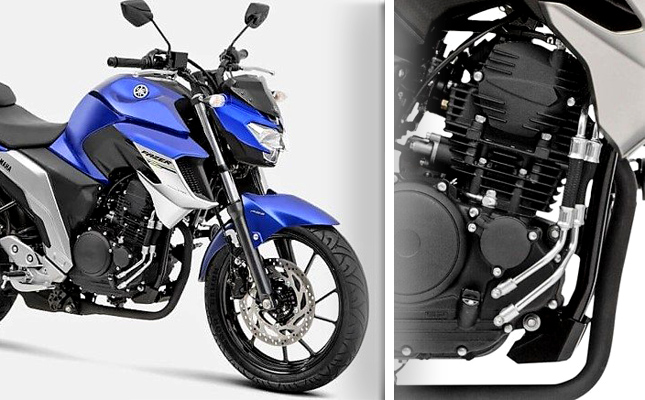 Renewable energy is on the rise and India is leading the race. Solar energy, over the years, has become very affordable and cheap, this combined with an increased responsibility towards the environment has made this energy really popular. Another slightly unconventional source, the biomass is also gaining traction in our country, which is most popular in rural areas. With two promising renewable sources on our hand, it makes sense to compare them for a potential fuel of the future motorcycles.
Renewable energy is on the rise and India is leading the race. Solar energy, over the years, has become very affordable and cheap, this combined with an increased responsibility towards the environment has made this energy really popular. Another slightly unconventional source, the biomass is also gaining traction in our country, which is most popular in rural areas. With two promising renewable sources on our hand, it makes sense to compare them for a potential fuel of the future motorcycles.The kind of source we’d use will affect the overall design and functionality of our bike, so it’s best to keep that in mind. Let’s take a look at electric as a source and then electric bikes. Electricity can be a renewable and an almost non-polluting source. I said "almost" because mining is still required for the precious metals used in making solar panels. Still, the Carbon footprint, in this case, is limited only to the initial stage. After installing solar panels and generating electricity, we can technically charge our motorcycles for as many times as we want and run it almost free of cost.
RELATED ARTICLE: Why You Should Consider Electric Bike?
Talking about Electric motorcycles, they are quite different in term of how they operate but not in how they perform. Since there are not many moving parts besides a motor and the main sprocket, almost every component related to the performance of bike can be modified by changing these two or tweaking the DC Battery. Modern age micro-controllers are sophisticated enough that they will almost never leave you stranded on the side of a road if you’re charging your bike regularly.
There is no clutch, no transmission and no engine in an electric motorcycle, so besides tyre, sprocket and chain maintenance, you can ride these bikes care-free. Already the Lightning LS-218 has achieved a range of 200 km/full charge while delivering 200 HP, and India’s own Emflux One is also expected to turn the direction of the market in a big way.
 Now let’s shift our focus to the Ethanol (Flex engine bikes) powered bikes. Flex engine bikes are those motorcycles which are designed to run more than one type of fuel. Mainly such bikes run E85 fuel which consists of 85% Ethanol and 15% high octane. Ethanol, which is produced by anaerobic digestion of biomass such as corn, burns a lot like petrol. The defense of Ethanol being a clean energy is that the source usually includes discarded crops and grains, which are eventually going to get degraded.
Now let’s shift our focus to the Ethanol (Flex engine bikes) powered bikes. Flex engine bikes are those motorcycles which are designed to run more than one type of fuel. Mainly such bikes run E85 fuel which consists of 85% Ethanol and 15% high octane. Ethanol, which is produced by anaerobic digestion of biomass such as corn, burns a lot like petrol. The defense of Ethanol being a clean energy is that the source usually includes discarded crops and grains, which are eventually going to get degraded.The process of anaerobic digestion degrades the organic waste efficiently while simultaneously producing an energy source. If the same process takes a commercial aspect by having huge industries which continuously grow crops by clearing forested areas and then produce ethanol, it no longer remains a clean source of energy.
RELATED ARTICLE: Motorcycles Of The Future
Coming to Ethanol powered bikes which use Flex engines, we can expect an identical operating capability as Petrol machines. The only aspect in these bikes different from conventional ones is in the lack of fuel economy as the calorific value of Ethanol is less than petrol, but the E85 fuel is relatively cheaper, to compensate for it. E85 powered bikes have bigger diameter fuel injectors to supply more ethanol, so a bigger fuel tank is also required for normal operations.
Flex engine bikes have a clutch, transmission, and every other component that you’d find in a gasoline-powered motorcycle.
Ethanol bikes can provide as a good buffer until Electric bikes arrive, due to their ability to use a variety of fuel blends. However, the future of motorcycles can’t be rested on the shoulders of flex engine bikes as the ultimate goal is to cut the emissions and replace it with something non-polluting, which electric seems to be doing just fine.
By: Yetnesh Dubey











